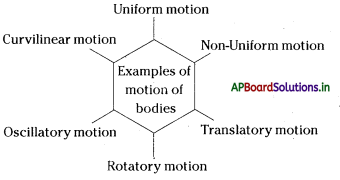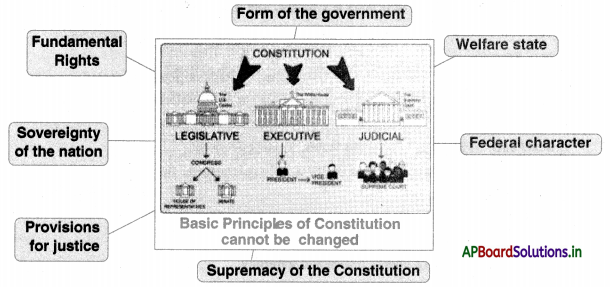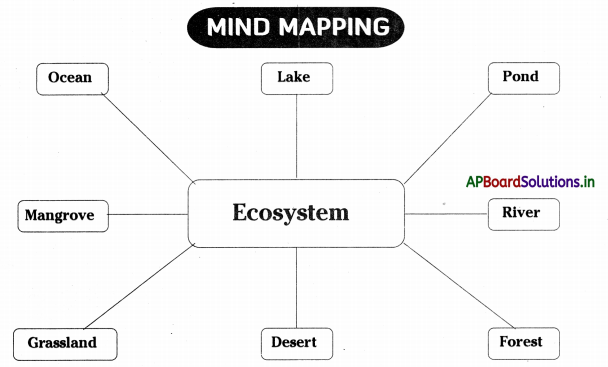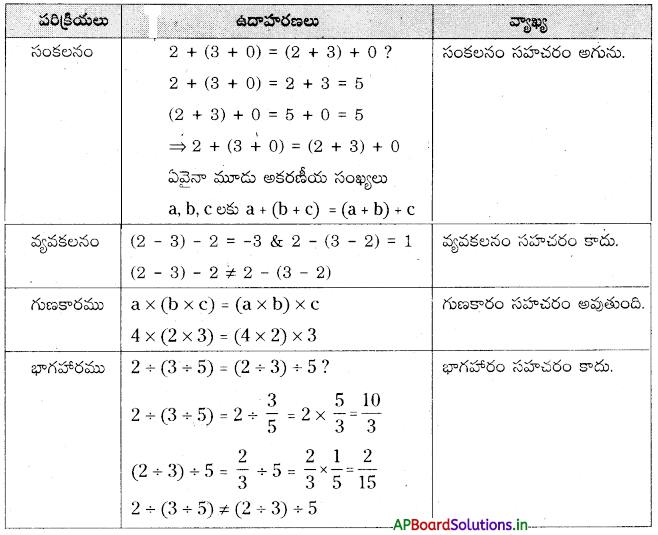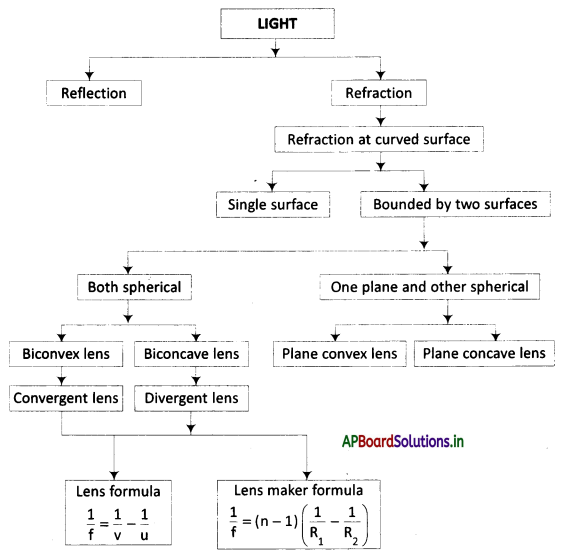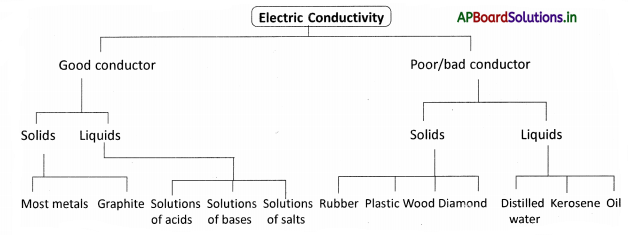Students can go through AP Board 7th Class Social Notes 1st Lesson విశ్వం మరియు భూమి to understand and remember the concept easily.
AP Board 7th Class Social Notes 1st Lesson విశ్వం మరియు భూమి
→ జీవరాశులున్న ఏకైక గ్రహం భూమి.
→ విశ్వాన్ని అధ్యయనం చేసే శాస్త్రాన్ని ఖగోళశాస్త్రం అంటారు. దీనిని రష్యన్ భాషలో “కాస్మాలజీ” అని ఆంగ్లంలో “ఆస్ట్రానమీ” అంటారు.
→ ఖగోళశాస్త్రంలో శాస్త్రీయ పరిశోధన ‘టెలిస్కోప్’ను కనుగొన్న గెలీలియో అనే ఇటాలియన్ ఖగోళ శాస్త్రవేత్తతో ప్రారంభమయింది.
→ విశ్వం యొక్క ఆవిర్భావం గురించి ‘మహా విస్ఫోటన (బిగ్ బ్యాంగ్) సిద్ధాంతం’ తెలియజేస్తుంది.
→ మహా విస్ఫోటన సిద్ధాంతాన్ని బెల్జియం దేశానికి చెందిన ఖగోళ శాస్త్రవేత్త జార్జిస్ లెమైటర్ ప్రతిపాదించాడు.
→ ప్రస్తుత విశ్వం 13.7 బిలియన్ సం||రాల క్రితం చిన్న అణువు నుండి ప్రారంభమై నేటికీ విస్తరిస్తోందని అతను గట్టిగా నమ్మాడు.
→ ‘విశ్వం’ అనే పదం లాటిన్ పదమైన ‘యూనివర్సమ్’ నుండి ఉద్భవించింది. దీని అర్థం ‘మొత్తం పదార్థం’ మరియు “మొత్తం అంతరిక్షం”.

→ విశ్వం సెకనుకు 70 కి.మీ. మేర విస్తరిస్తోంది.
→ ఖగోళ శాస్త్రవేత్తల ప్రకారం విశ్వంలో కనీసం 125 బిలియన్ గెలాక్సీలున్నాయి.
→ గెలాక్సీ యొక్క ఒక అంచు నుంచి మరో అంచుకు దూరం 1,20,000 కాంతి సంవత్సరాలు.
→ కాంతి సంవత్సరం అనేది దూరాన్ని కొలిచే ఒక ప్రమాణం. కాంతి ఒక సం||లో ప్రయాణించగల దూరం.
→ కాంతి సెకనుకు 3,00,000 కి.మీ. వేగంతో ప్రయాణిస్తుంది.
→ మన సౌర కుటుంబంలో 8 గ్రహాలున్నాయి. అవి బుధుడు, శుక్రుడు, భూమి, కుజుడు (అంగారకుడు), బృహస్పతి (గురుడు), శని, వరుణుడు మరియు ఇంద్రుడు.
→ శాస్త్రవేత్తల అంచనా ప్రకారం 4. 6 బిలియన్ సం||రాల క్రితమే మన సౌర కుటుంబం ఆవిర్భవించింది.
→ భూకేంద్రక సిద్ధాంతాన్ని టాలెమి అనే ఈజిప్టు ఖగోళ శాస్త్రవేత్త ప్రతిపాదించాడు.
→ సూర్యకేంద్రక సిద్ధాంతాన్ని నికోలస్ కోపర్నికస్ అనే పోలిష్ ఖగోళ శాస్త్రవేత్త ప్రతిపాదించాడు.
→ భూమి విశ్వానికి కేంద్రమని నమ్మే సిద్ధాంతం భూకేంద్రక సిద్ధాంతం.
→ సూర్యుడు సౌరవ్యవస్థకు కేంద్రమని నమ్మే సిద్ధాంతం సూర్యకేంద్రక సిద్ధాంతం.
→ నీహారిక పరికల్పన ప్రకారం గ్రహాలు సూర్యునితో సంబంధం ఉన్న ధూళి మరియు వాయువులతో కూడిన మేఘం నుండి ఏర్పడ్డాయి.
→ ఒక ప్రాంతంలోని మొక్కలు, జంతువులు మరియు సూక్ష్మజీవులతో కూడిన అన్ని జీవ మరియు జీవరహిత కారకాలతో పనిచేసే సహజ వ్యవస్థను పర్యావరణం అంటారు.

→ భూమి యొక్క రాతి పొరను శిలావరణము అంటారు.
→ శిలావరణములో భూస్వరూపాలను మూడు శ్రేణులుగా విభజించారు. అవి మొదటి శ్రేణి, రెండవ శ్రేణి, మూడవ శ్రేణి.
→ శిలావరణము (లిథోస్పియర్) అనే పదం ‘లిథో’ మరియు స్నెరా అనే గ్రీకు పదాల నుంచి ఉద్భవించింది. లిథో అంటే ‘రాయి’ మరియు స్పైరా అంటే ‘గోళం’ లేదా బంతి అని అర్ధం.
→ పర్యావరణం (ఎన్విరాన్మెంట్) అనే పదం ఫ్రెంచ్ పదం అయిన ‘ఎన్విరోనర్’ అంటే ‘పొరుగు’ అనే అర్ధం నుంచి ఉత్పన్నమైంది.
→ భూమి అంతర్భాగం మూడు పొరలను కలిగి ఉంది. అవి : 1) భూ పటలం, 2) భూ ప్రావారం, 3) భూకేంద్ర మండలం.
→ వ్యవసాయం మరియు నివాసాల కోసం మనం ఉపయోగించే ఆవరణం శిలావరణము.
→ భూమి యొక్క ఉపరితలంలో ఉన్న అన్ని నీటి వనరులను సమష్టిగా జలావరణం అంటారు.
→ హైడ్రోస్పియర్ (జలావరణం) అనే పదం ‘హైడర్’ మరియు ‘స్పైరా’ అనే గ్రీకు పదాల నుండి ఉద్భవించింది. ‘హైడర్’ అంటే నీరు మరియు స్పైరా అంటే గోళం లేదా బంతి అని అర్ధం.
→ జలమును సమృద్ధిగా కలిగి ఉన్న ఏకైక గ్రహం కనుక భూమిని “జలయుత గ్రహం” అని పిలుస్తారు. – భూమి యొక్క ఉపరితలం సుమారు 2/3 వ వంతు (71%) నీటితో ఆవరించి ఉంది.
→ కేవలం 1% నీరు మాత్రమే మన అవసరాలకు ఉపయోగపడుతుంది. మిగిలిన 99% నీరు మంచు, ఉప్పు నీరు మొదలగు రూపంలో ఉంటుంది.
→ భూమి లోపల రాళ్ళ పొరల మధ్య లోతుగా ఉండే జలాన్నే భూగర్భ జలం అంటారు.
→ భూమి చుట్టూ ఉన్న గాలి యొక్క మందపాటి పొరను వాతావరణం అంటారు.
→ వాతావరణం (అట్మాస్ఫియర్) అనే పదం ‘అట్మోస్’ మరియు ‘స్పెరా’ అనే గ్రీకు పదాల నుండి ఉద్భవించింది. అట్మోస్ అంటే ‘ఆవిరి’ అని ‘స్పైరా’ అంటే గోళం లేదా బంతి అని అర్థం.
→ ఆక్సిజన్ “ప్రాణ వాయువు” గా పరిగణించబడుతుంది.
→ వాతావరణంలో ట్రోపో, స్ట్రాటో, మెసో, థర్మో మరియు ఎక్సో అనే ‘5’ (ఆవరణాలు) పొరలు కలవు.
→ వృక్షాలు, జంతువులు, కంటికి కనిపించని అసంఖ్యాక సూక్ష్మజీవులు మరియు మానవులు కలిసి ఉండే ఆవరణాన్ని జీవావరణం అంటారు.
→ జీవావరణం (బయోస్పియర్) అనే పదం గ్రీకు పదాలైన ‘బయోస్’ మరియు స్పెరా నుండి ఉద్భవించింది. ‘బయోస్’ అంటే ‘జీవితం’ మరియు స్పెరా అంటే ‘గోళం’ లేదా ‘బంతి’.
→ ప్రతి సంవత్సరం జూన్ 5వ తేదీని ప్రపంచ పర్యావరణ దినోత్సవంగా జరుపుతున్నాం.
→ ప్రతి సంవత్సరం ఏప్రిల్ 22వ తేదీని ప్రపంచ ధరిత్రీ దినోత్సవంగా జరుపుతున్నాం.
→ ప్రతి సంవత్సరం మార్చి 22వ తేదీని ప్రపంచ జల దినోత్సవంగా జరుపుతున్నాం.
→ ప్రతి సంవత్సరం సెప్టెంబరు 16వ తేదీని ప్రపంచ ఓజోన్ దినోత్సవంగా జరుపుతున్నాం.
→ వాతావరణంలో ఆక్సిజన్ 21% కలదు.
→ వాతావరణంలో నైట్రోజన్ 78% కలదు.
→ వాతావరణంలో కార్బన్ డై ఆక్సైడ్ 0.03% కలదు.
→ వాతావరణంలో ఆర్గాన్ 0.93% కలదు.

→ మానవులతో ఏర్పడిన పరిసరాలను ‘మానవ పర్యావరణం’ అంటారు. ఇది వ్యక్తి కుటుంబం, సమాజం, మత, విద్య, ఆర్థిక, రాజకీయ పరిస్థితులను కల్గి ఉంటుంది.
→ మానవులు తయారు చేసిన పరిసరాలను మానవ నిర్మిత పర్యావరణం అంటారు. ఇది భవనాలు, కర్మాగారాలు, ఉద్యానవనాలు, రోడ్లు, వంతెనలు, ప్రాజెక్ట్లు మరియు స్మారక చిహ్నాలు మొ||న వాటిని కల్గి ఉంటుంది.
→ పర్యావరణంలోనికి వివిధ రకాల మలినాలు చేరడాన్ని కాలుష్యం అంటారు.
→ విపత్తు అనేది స్వల్ప లేదా దీర్ఘకాలికంగా సంభవించే తీవ్రమైన అంతరాయం.
→ వరద అనేది పొడిగా ఉన్న భూమిని మునిగిపోయేలా చేసే అధిక నీటి ప్రవాహం.
→ భూమి అంతర్భాగంలో అకస్మాత్తుగా విడుదలయ్యే తరంగాల ప్రభావంతో భూమి కంపించడాన్ని “భూకంపం” అంటారు.
→ ఏదైనా విపత్తును నివారించడానికి అవసరమైన చర్యలతో ప్రణాళిక రూపొందించడం, నిర్వహించడం మరియు అమలు చేయడం యొక్క నిరంతర, సమగ్ర ప్రక్రియనే విపత్తు నిర్వహణ అంటారు.
→ పదవ పంచవర్ష ప్రణాళికలో మొదటిసారిగా విపత్తు నిర్వహణ “అభివృద్ధి అంశం”గా నిర్ణయించబడింది.
→ విశ్వం : ఊహించలేని అనేక అంశాలు కలిగి ఉన్న విస్తారమైన అంతరిక్షమును విశ్వం అంటారు.
→ సౌర కుటుంబం : సూర్యుడు, గ్రహాలు, ఉపగ్రహాలు, గ్రహశకలాలు, ఉల్కలు మరియు తోకచుక్కలు మొదలైన ఖగోళ వస్తువులు కల్గిన వ్యవస్థ.
→ పర్యావరణం : ఒక ప్రాంతంలోని మొక్కలు, జంతువులు మరియు సూక్ష్మజీవులతో కూడిన అన్ని జీవ మరియు జీవరహిత కారకాలతో కలిసి పనిచేసే సహజ వ్యవస్థను పర్యావరణం అని అంటారు.
→ కాలుష్య కారకాలు : పర్యావరణాన్ని కలుషితం చేసే అంశాలు : ఉదా : శిలాజ ఇంధనాలను మండించటం, అడవుల నిర్మూలన, పారిశ్రామిక వ్యర్థాలు.
→ విపత్తులు : అనుకోకుండా పెద్ద ఎత్తున భారీగా ధన, ప్రాణ, ఆస్తి నష్టం కల్గించే ప్రమాదాలు. ఇవి సహజంగా సంభవిస్తాయి. ప్రకృతి విపత్తుకు ఉదా : భూకంపాలు, సునామి మొదలైనవి.
→ ఖగోళశాస్త్రం : విశ్వాన్ని అధ్యయనం చేసే శాస్త్రాన్ని ఖగోళ శాస్త్రం అంటారు.
→ ఖగోళ శాస్త్రవేత్త : అంతరిక్షంలో నక్షత్రాలు, గ్రహాలు మరియు ఇతర సహజ వస్తువులను అధ్యయనం చేసే వ్యక్తియే ఖగోళ శాస్త్రవేత్త.
→ మహా విస్ఫోటన (బిగ్ బ్యాంగ్) సిద్ధాంతం: ఈ విశ్వం 13.7 బిలియన్ సం||రాల క్రితం ఒక చిన్న అణువు నుండి ప్రారంభమై నేటికీ విస్తరిస్తోందని తెలియజేసే సిద్ధాంతం. దీనిని జార్జిస్ లెమైటర్ ప్రతిపాదించాడు.

→ కాంతి సంవత్సరం : కాంతి సంవత్సరం అనేది దూరాన్ని కొలిచే ఒక ప్రమాణం, కాంతి ఒక సం||లో ప్రయాణించగల దూరం.
→ భూకేంద్రక సిద్ధాంతం : భూమి ఈ విశాల విశ్వానికి కేంద్రమని ఈ సిద్ధాంతం చెబుతోంది.
→ సూర్యకేంద్రక సిద్ధాంతం : సూర్యుడు ఈ విశాల విశ్వానికి కేంద్రమని ఈ సిద్ధాంతం చెబుతోంది.
→ శిలావరణము : భూమి యొక్క రాతి పొర. + జలావరణము : భూమి యొక్క ఉపరితలంలో ఉన్న అన్ని నీటి వనరులను సమష్టిగా జలావరణం అంటారు.
→ వాతావరణము : భూమి చుట్టూ ఉన్న గాలి యొక్క మందపాటి పొర.
→ జీవావరణము : వృక్షాలు, జంతువులు, కంటికి కన్పించని అసంఖ్యాక సూక్ష్మజీవులు మరియు మానవులు కలసి ఉండే ఆవరణం.
→ భూమి అంతర్భాగం : 1) భూపటలము, 2) భూ ప్రావారము, 3) భూ కేంద్రము.
→ వాతావరణంలోని పొరలు : ‘ట్రోపో, స్టాటో, మెసో, థర్మో మరియు ఎక్సో ఆవరణములు.
→ మానవ పర్యావరణం : మానవులతో ఏర్పడిన పరిసరాలు. ఉదా : కుటుంబం, మతం.
→ మానవ నిర్మిత పర్యావరణం : మానవులు తయారు చేసిన పరిసరాలు.
ఉదా : భవనాలు, కర్మాగారాలు.
→ పర్యావరణ కాలుష్యం : పర్యావరణంలోనికి వివిధ రకాల మలినాలు చేరడాన్ని పర్యావరణ కాలుష్యం అంటారు.
→ విపత్తు : విపత్తు అనేది స్వల్ప లేదా దీర్ఘకాలికంగా సంభవించే తీవ్రమైన అంతరాయం.
→ విపత్తు నిర్వహణ : ఏదైనా విపత్తును నివారించడానికి అవసరమైన ప్రణాళిక రూపొందించడం, నిర్వహించడం మరియు అమలు చేయడం యొక్క నిరంతర మరియు సమగ్ర ప్రక్రియ.
→ నీటి కాలుష్యం : నీటి నాణ్యతలో ఏదైనా భౌతిక, జీవ లేదా రసాయనిక మార్పు జరిగి దానివల్ల జీవులపై దుష్ప్రభావం ఏర్పడినట్లయితే దానిని నీటి కాలుష్యంగా పరిగణిస్తారు.

→ పాలపుంత : మన సౌర వ్యవస్థ ఉన్న గెలాక్సీ.
→ పారిశ్రామిక విప్లవం : పారిశ్రామిక రంగంలో వచ్చిన ఆకస్మిక మార్పులు (ఉత్పత్తి రంగం).
→ వాయు కాలుష్యం : గాలిలో కార్బన్ డయాక్సెడ్ వంటి హానికరమైన మూలకాల పెరుగుదల.
→ కిరణజన్య సంయోగ : కార్బన్ డయాక్సెడ్ మరియు నీటి నుండి పోషకాలను సంశ్లేషణ చేయడానికి మొక్కలు సూర్యరశ్మిని ఉపయోగించే ప్రక్రియ.
→ గురుత్వాకర్షణ శక్తి : విశ్వంలోని రెండు వస్తువుల మధ్య ఉన్న ఆకర్షణ శక్తి.
1.
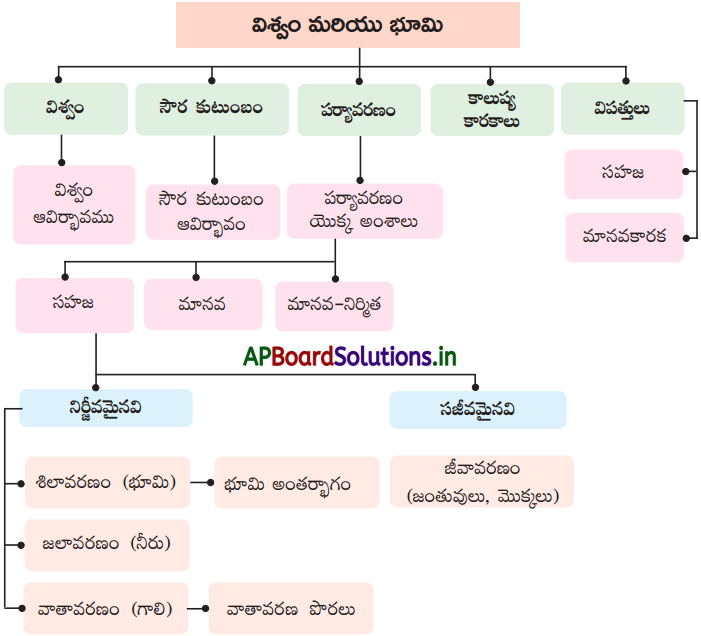
2.

3.

![]()
![]()
